Physical Address
Minuwangoda ,Sri Lanka.
Physical Address
Minuwangoda ,Sri Lanka.
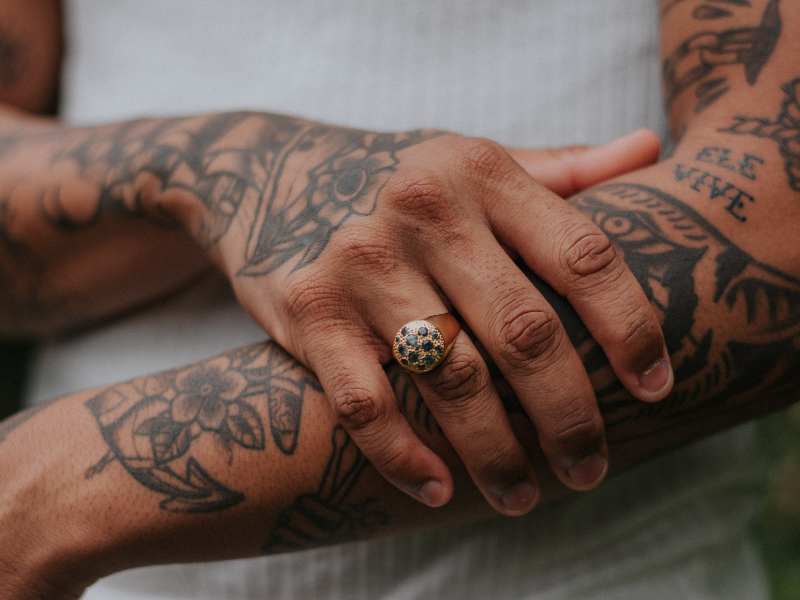
Godna tattoos are an ancient form of body art with rich cultural significance. These tattoos, deeply rooted in history, carry symbolic meanings and reflect the heritage of the communities that practice them. In this article, we will explore the world of Godna tattoos, their types, meanings, history, and the best places to get them.

Godna refers to traditional tattoos that are part of various tribal cultures in India. These tattoos are not just body decorations; they hold profound cultural, spiritual, and social significance. Godna tattoos are especially prevalent among indigenous tribes in states like Madhya Pradesh, Chhattisgarh, Jharkhand, and Odisha.
In English, Godna is commonly referred to as “tribal tattoos” or “traditional Indian tattoos.” These terms highlight the cultural heritage and traditional practices associated with Godna tattoos.
Godna tattoos come in various styles and patterns, each with its own unique meaning. The main types include:
The meaning behind Godna tattoos varies based on the designs and cultural context. Generally, these tattoos serve purposes such as:
The history of Godna tattoos is rich and ancient, stretching back thousands of years. These tattoos are deeply embedded in the cultural and social fabric of various tribal communities in India. Understanding their history provides valuable insights into the significance and evolution of this traditional art form.
Godna tattoos are believed to have originated in ancient India, particularly among the indigenous tribes of central and eastern India. The practice of tattooing has been found in various ancient civilizations, but in India, it holds a unique place in tribal cultures. Early mentions of tattooing can be found in ancient scriptures and texts, where it is often associated with rituals and religious ceremonies.
The process of Godna tattooing was traditionally a sacred practice, carried out by skilled tattoo artists who were highly respected in their communities. These artists, often women, used natural dyes made from plant extracts, charcoal, and other organic materials. The tools used for tattooing were simple yet effective, typically consisting of needles made from bones or thorns.
Godna tattoos were not merely decorative; they played a crucial role in the social and cultural lives of the tribes. Each tattoo design carried specific meanings and served various purposes:
As India went through various historical phases, including the influence of empires, colonization, and modernization, the practice of Godna tattoos also evolved. During the Mughal and British periods, tattooing saw a decline due to changing social norms and the stigmatization of tribal practices. However, the tradition never completely disappeared.
In the post-independence era, there has been a resurgence of interest in traditional art forms, including Godna tattoos. Efforts to preserve and revive these cultural practices have been supported by both governmental and non-governmental organizations. Today, Godna tattoos are celebrated as an important part of India’s intangible cultural heritage.
In contemporary times, Godna tattoos have gained popularity beyond tribal communities. Many people, both within India and internationally, are drawn to the unique and intricate designs of Godna tattoos. Tattoo artists are now combining traditional motifs with modern techniques, creating a fusion of old and new.
Despite the modern adaptations, the essence of Godna tattoos remains rooted in their historical and cultural significance. Traditional tattoo artists continue to play a vital role in preserving the authenticity of this art form. They pass down their knowledge and skills through generations, ensuring that the practice of Godna tattoos endures.
As a tattoo designer and philosophy expert, I have had the privilege of working with traditional Godna artists and experiencing the profound cultural significance of these tattoos firsthand. During my travels to tribal regions, I have witnessed the deep connection that these communities have with their tattoos. Each design tells a story, carrying the wisdom and heritage of their ancestors.
One memorable experience was when I collaborated with a Godna artist from Madhya Pradesh. She shared the stories behind each design, explaining how they represented elements of nature, spiritual beliefs, and social values. The process was not just about creating art on the skin but about honouring and preserving a way of life that has been passed down for generations.
When deciding on a Godna tattoo, placement and size are crucial factors that can influence the overall look and significance of the design. These considerations not only affect the aesthetic appeal but also the personal and cultural meaning attached to the tattoo. Here, we delve into various aspects of placement and size to help you make an informed decision.
The placement of a Godna tattoo is often influenced by cultural traditions, the design’s symbolism, and personal preferences. Here are some common placements and their significance:
Significance: Tattoos on the hands and fingers are highly visible and often hold significant cultural meanings. In many tribal communities, hand tattoos can symbolize social status, tribal affiliation, or achievements.
Design Suitability: Smaller, intricate designs such as geometric patterns, floral motifs, or religious symbols are ideal for this placement. The limited space requires detailed and precise artwork.
Considerations: Hand and finger tattoos tend to fade faster due to constant use and exposure. They also can be more painful due to the thinner skin and proximity to bones.
Significance: Arm tattoos, including the forearms and wrists, are popular placements for Godna designs. They offer a medium-sized canvas and can be easily shown or concealed.
Design Suitability: Medium-sized designs like peacocks, lotus flowers, and geometric patterns fit well on the arms. Wrists are suitable for smaller, circular designs or bands.
Considerations: Arm tattoos are less painful than hand tattoos and tend to maintain their appearance better over time. The curvature of the arm can enhance the flow of certain designs.
Significance: The shoulders and upper back are traditional placements for larger Godna tattoos, often used to symbolize protection and strength.
Design Suitability: Larger, more complex designs like elephants, sun and moon motifs, and detailed tribal masks are well-suited for this area. The broad canvas allows for intricate and expansive artwork.
Considerations: This area is less exposed to sunlight, which helps in maintaining the tattoo’s vibrancy. The pain level is moderate, and the flat surface provides a good base for detailed work.
Significance: Chest tattoos often carry personal and spiritual significance, close to the heart and symbolizing deeply held beliefs and values.
Design Suitability: Symmetrical designs, religious symbols, and powerful animal motifs are commonly placed on the chest. The sternum is ideal for vertical designs like serpents or floral vines.
Considerations: Chest tattoos can be more painful, especially near the sternum and ribs. However, the large surface area allows for significant detail and complexity.
Significance: Tattoos on the legs and thighs can symbolize mobility, strength, and journey. These areas offer a large canvas for extensive designs.
Design Suitability: Large designs such as tribal patterns, mythical creatures, and detailed nature scenes are ideal for the thighs. Calves and ankles are suitable for smaller, intricate designs.
Considerations: Leg tattoos generally experience less fading and are moderately painful. The large area allows for elaborate and detailed designs, providing an excellent canvas for intricate Godna patterns.
The size of your Godna tattoo should align with both the design’s complexity and the placement area. Here’s how to determine the right size for your tattoo:
Placement: Ideal for hands, fingers, wrists, and ankles. Design Suitability: Simple and intricate patterns, small symbols, and minimalistic designs. Considerations: Small tattoos are discreet and can be easily hidden. They are less painful and require shorter sessions but may lack the detail of larger tattoos.
Placement: Suitable for forearms, upper arms, calves, and the upper back. Design Suitability: Moderate complexity designs like floral motifs, religious symbols, and animals. Considerations: Medium tattoos offer a balance between visibility and detail. They provide enough space for intricate designs without being overwhelming.
Placement: Best for shoulders, chest, back, thighs, and legs. Design Suitability: Highly detailed and complex designs, full scenes, and elaborate tribal patterns. Considerations: Large tattoos require more time and can be more painful, especially in sensitive areas. They allow for significant detail and make a bold statement.
As an experienced tattoo designer, I always emphasize the importance of carefully considering both placement and size before getting a Godna tattoo. Each placement area has its unique characteristics, affecting not only the tattoo’s appearance but also its longevity and the wearer’s comfort.
One of my clients, a young woman from Odisha, chose a detailed lotus and peacock design for her upper back. The placement allowed the intricate details to shine, creating a stunning visual impact. She shared that having the tattoo on her back made her feel both empowered and connected to her cultural roots, while also being able to keep it personal and somewhat private.
Another client, a man from Madhya Pradesh, opted for a geometric pattern around his forearm. This medium-sized tattoo fit perfectly around the natural contours of his arm, enhancing the design’s flow and symmetry. He appreciated the balance of visibility and discretion, making it a meaningful yet everyday part of his appearance.
Godna tattoos, with their rich symbolism and cultural significance, offer a wide array of designs that are both visually striking and deeply meaningful. These designs are often inspired by nature, spirituality, and tribal heritage, reflecting the values and beliefs of the communities that create them. Here are some of the most popular Godna tattoos, each with its own unique story and symbolism.
Peacock tattoos are among the most popular Godna designs. The peacock, a symbol of beauty and grace, is revered in many Indian cultures. In Godna tattoos, peacocks often represent:
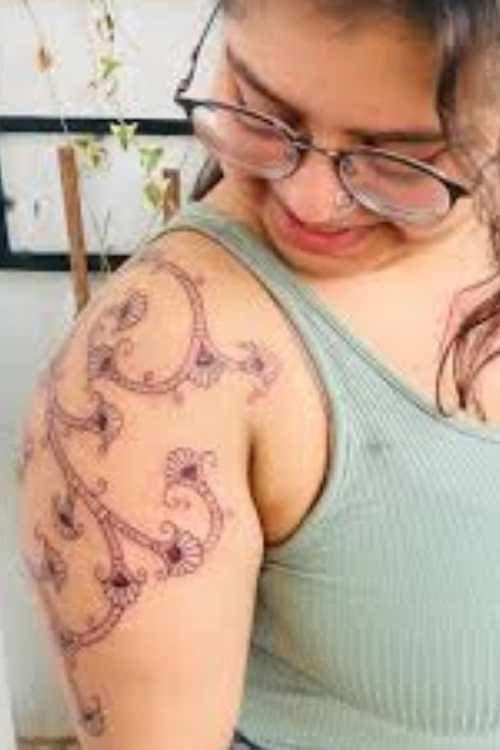
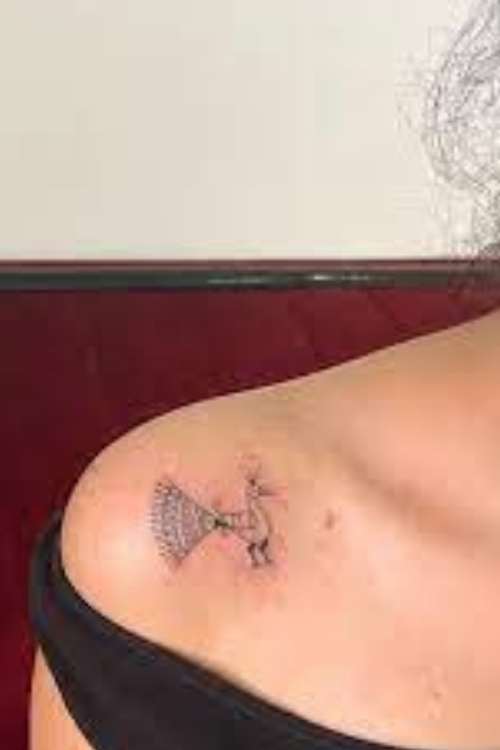
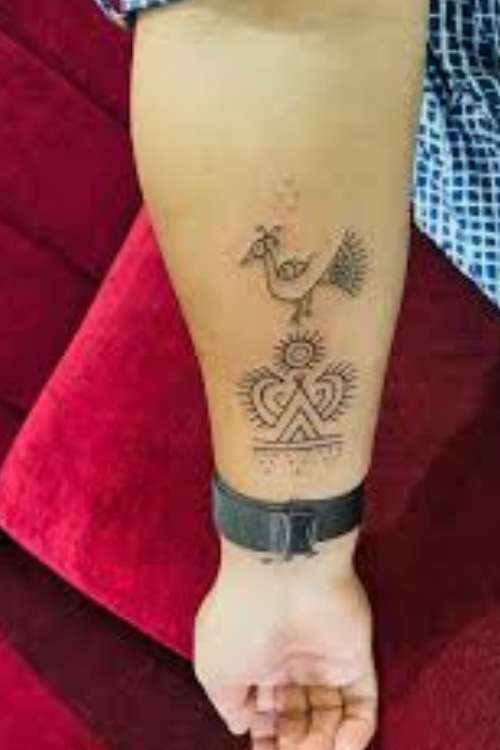
Elephant tattoos are another favourite in Godna art, symbolizing strength, wisdom, and good fortune. Elephants are often depicted with elaborate decorations, reflecting their importance in cultural rituals and ceremonies.
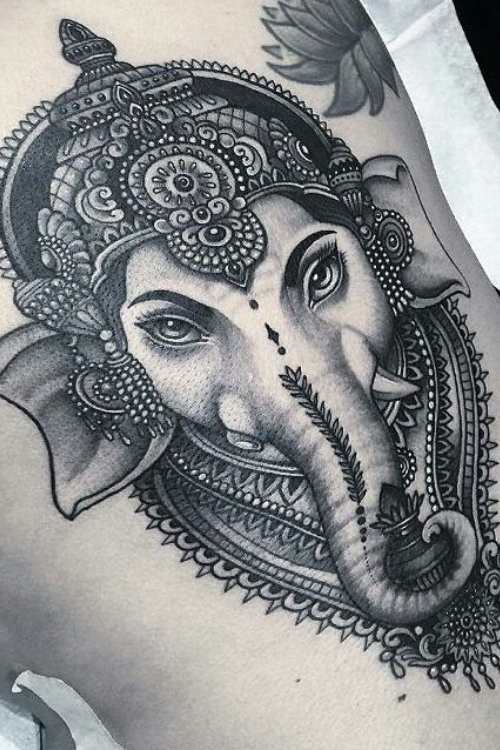
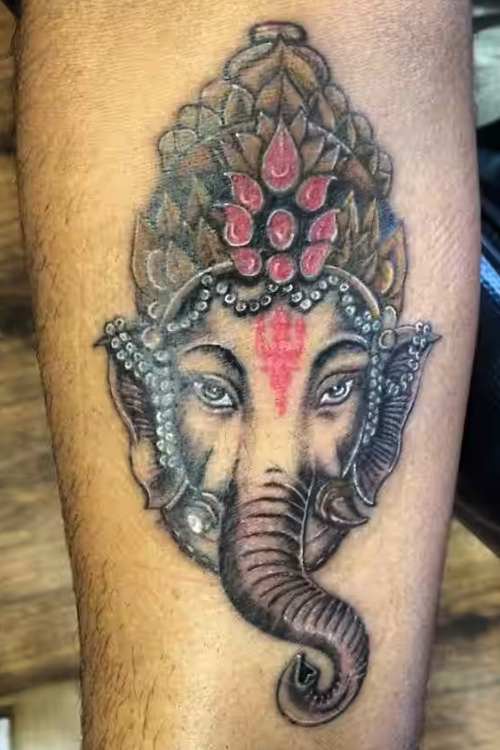
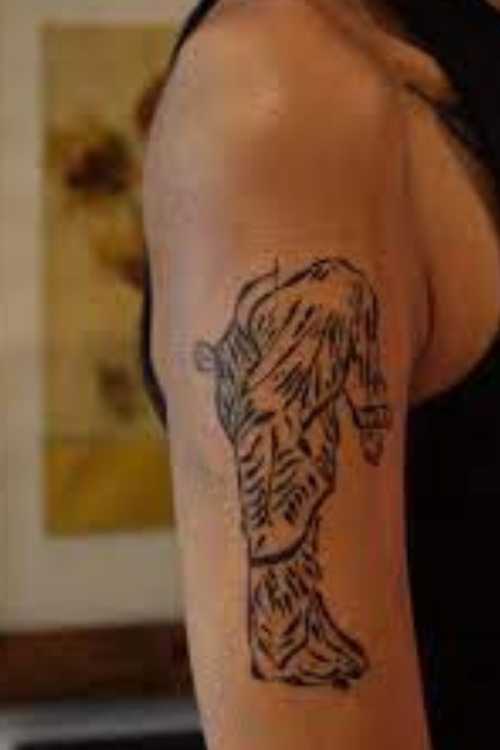
The lotus flower is a powerful symbol in many Indian traditions, representing purity, enlightenment, and rebirth. In Godna tattoos, lotus designs are often chosen for their spiritual significance.
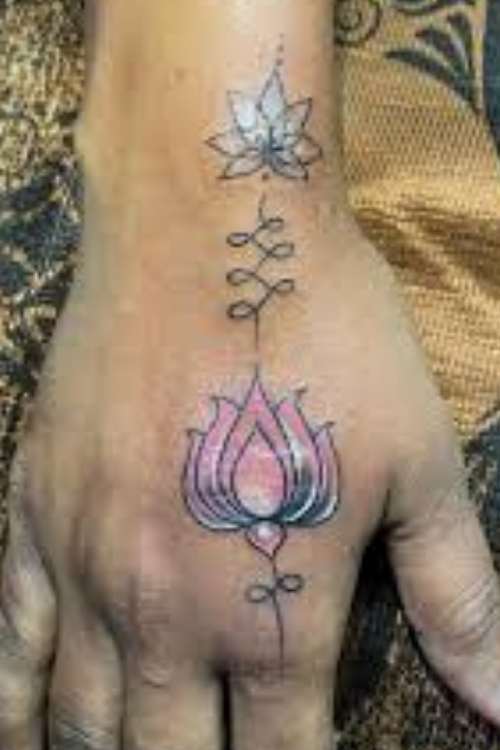
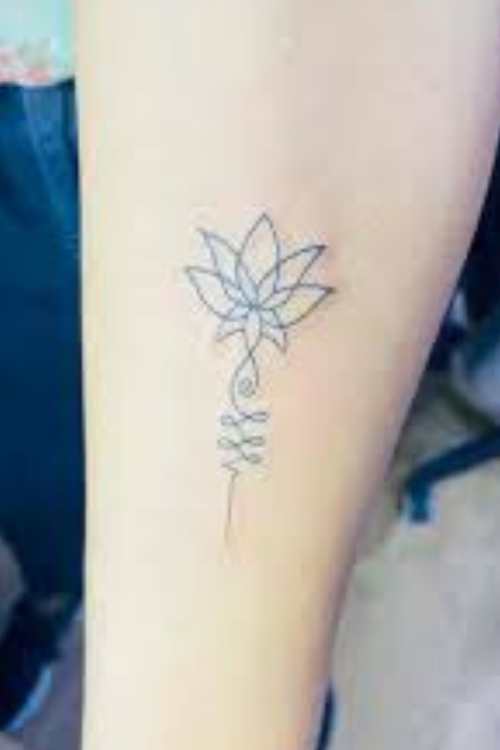
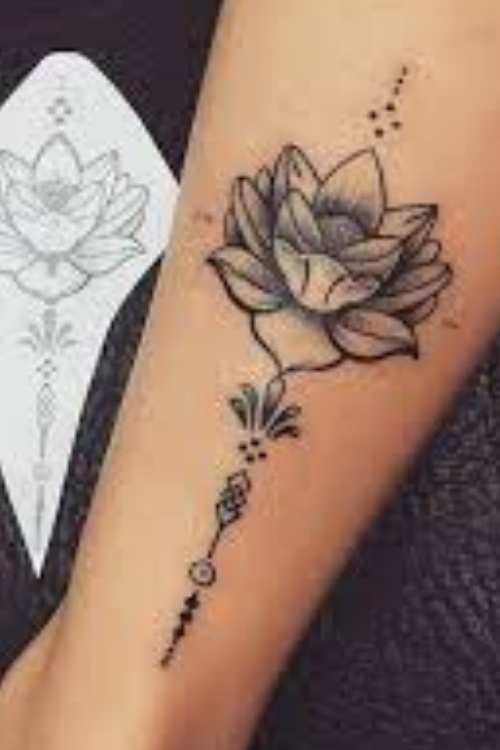
Sun and moon tattoos are popular for their cosmic symbolism, representing balance, duality, and the passage of time. These designs often feature intricate patterns and are placed in prominent positions on the body.
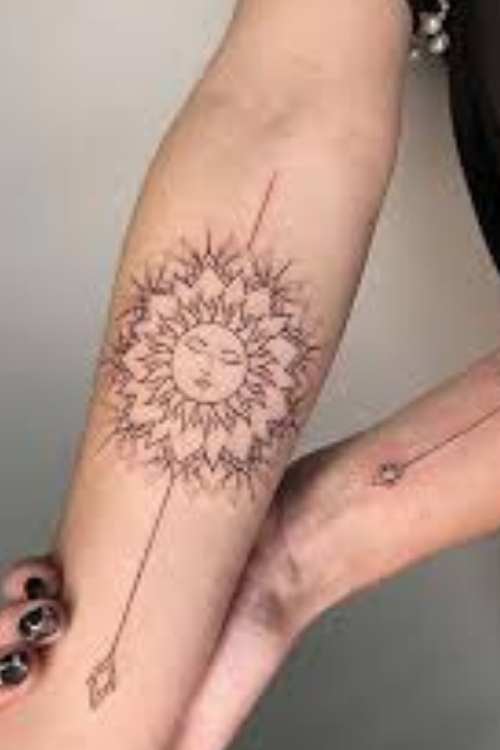
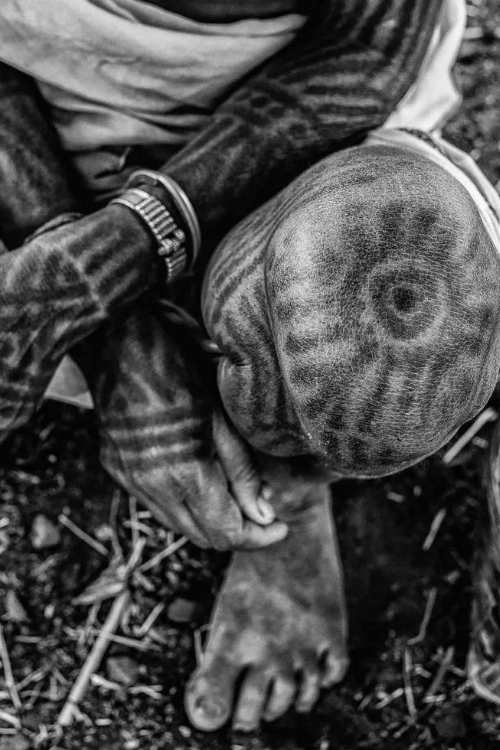
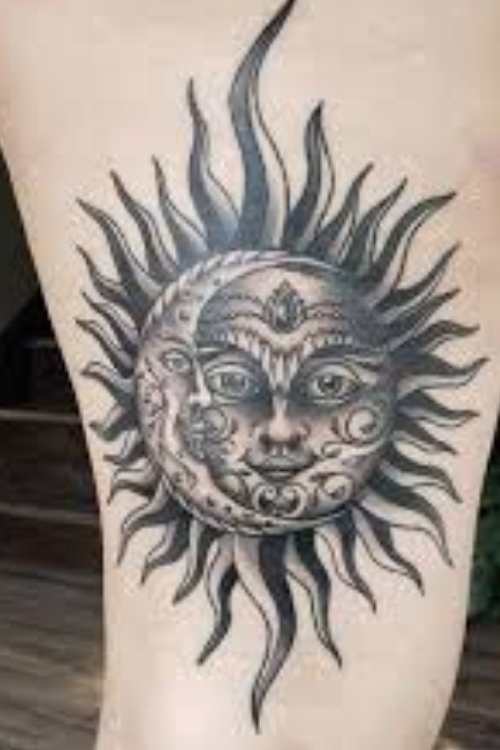
Tribal mask tattoos are deeply rooted in the heritage and spiritual beliefs of the tribes. These designs can be quite intricate, often incorporating elements from nature and mythology.
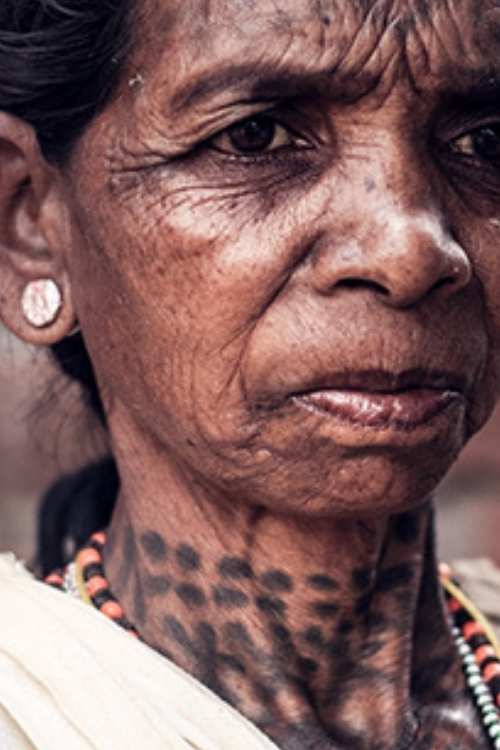
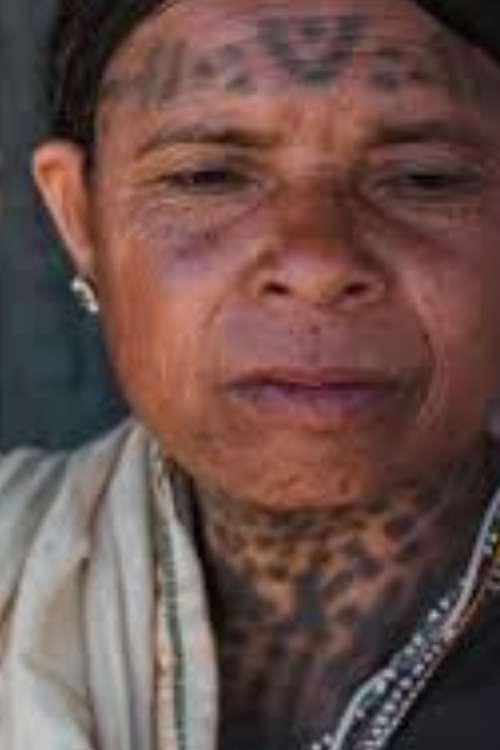
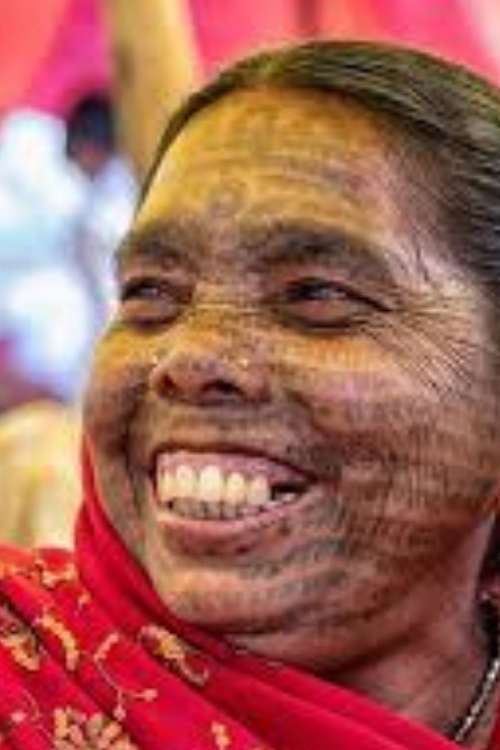
Birds and animal motifs are prevalent in Godna tattoos, each carrying its symbolic meaning. Common choices include:
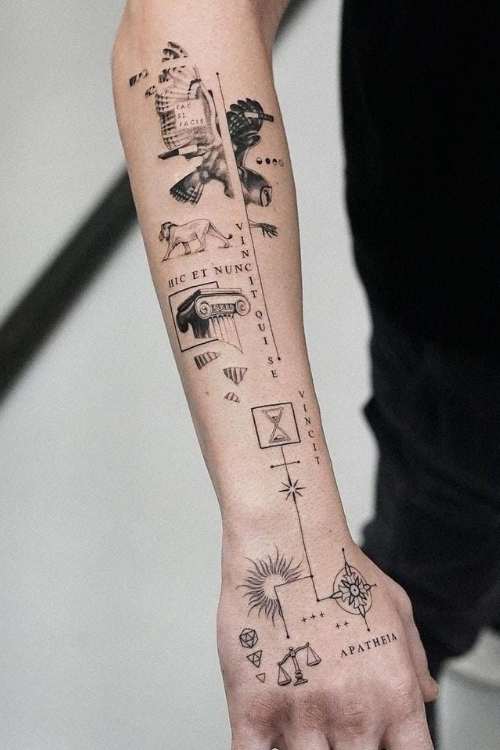
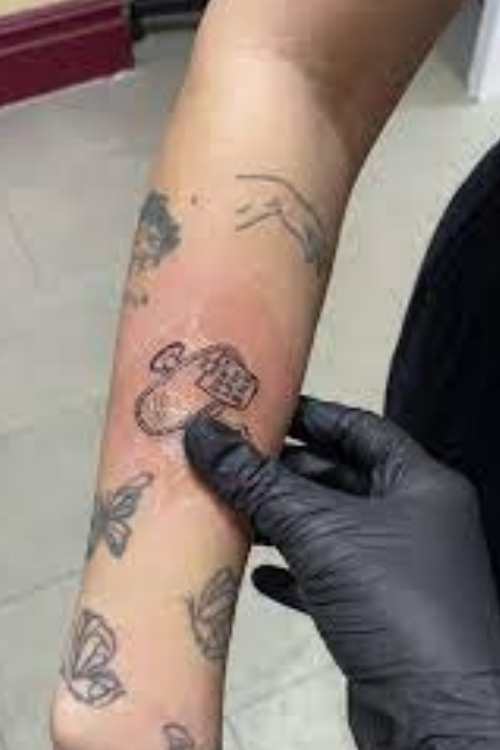
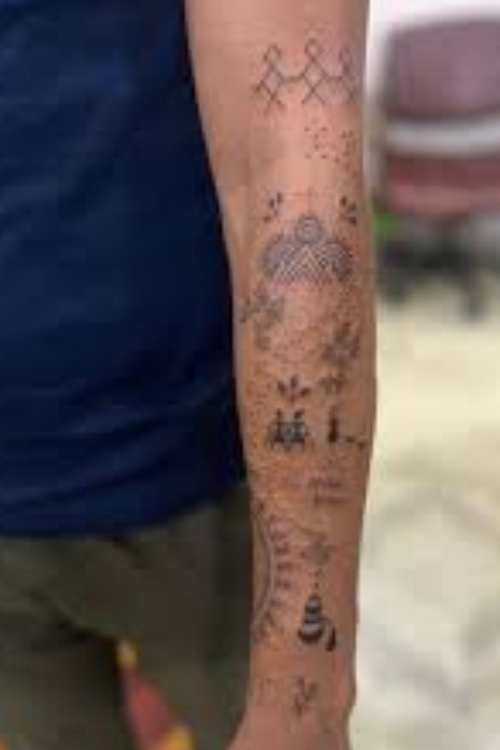
Geometric patterns are a staple of Godna tattoos, known for their aesthetic appeal and symbolic meanings. These designs often include:
Flowers, besides the lotus, are commonly featured in Godna tattoos, each type of flower having its own symbolism:
Godna tattoos often include religious symbols that reflect the spiritual beliefs of the wearer:
Abstract designs and mythical creatures also find their place in Godna tattoos, offering a creative expression of cultural myths and personal stories:
Choosing a Godna tattoo is a deeply personal decision, influenced by one’s cultural background, personal beliefs, and aesthetic preferences. It’s important to research and understand the meanings behind different designs to select one that resonates with you. Consulting with a skilled Godna tattoo artist can also help you create a design that is both meaningful and visually appealing.
As a tattoo designer with extensive experience in traditional art forms, I have seen firsthand the profound impact Godna tattoos have on individuals. One of my clients, a woman from a tribal community in Chhattisgarh, chose a lotus and peacock design for her back. She shared that the lotus symbolized her journey of personal growth, while the peacock represented the beauty and strength she found within herself.
Another memorable experience was working with a young man from Jharkhand who opted for a geometric pattern combined with an elephant motif. For him, the geometric shapes represented the structured path of his life, while the elephant symbolized the strength and wisdom he aspired to embody.
The cost of Godna tattoos can vary widely based on factors such as the complexity of the design, the size of the tattoo, and the experience of the tattoo artist. Generally, traditional Godna tattoos can range from $50 to $300 or more. It’s important to choose a skilled and knowledgeable artist to ensure the authenticity and quality of the tattoo.
1. Are Godna tattoos painful to get? Yes, like any tattoo, getting a Godna tattoo can be painful. The level of pain varies depending on the individual’s pain tolerance and the location of the tattoo on the body.
2. How long does it take to get a Godna tattoo? The time required to complete a Godna tattoo depends on the design’s complexity and size. Small tattoos can take a couple of hours, while larger, intricate designs may require multiple sessions.
3. Can anyone get a Godna tattoo? While anyone can get a Godna tattoo, it’s essential to understand and respect the cultural significance behind these designs. Consulting with a knowledgeable artist who respects the tradition is crucial.
4. How should I care for my Godna tattoo after getting it? Aftercare for Godna tattoos includes keeping the tattoo clean, applying recommended ointments, and avoiding direct sunlight and soaking in water until it heals completely.
5. Do Godna tattoos have to be black, or can they be coloured? Traditionally, Godna tattoos are done in black using natural dyes. However, modern adaptations may incorporate colours. It’s best to discuss this with your tattoo artist.
Godna tattoos are more than just body art; they are a significant part of cultural identity and heritage. From their symbolic meanings to their historical roots, Godna tattoos offer a profound connection to the past. Whether you are drawn to their beauty or the stories they tell, getting a Godna tattoo is a unique and meaningful experience.
Choosing the right design and artist is crucial to ensure that your Godna tattoo reflects its true cultural significance. By understanding and respecting the tradition, you can embrace the ancient art of Godna tattoos and carry a piece of history with you.